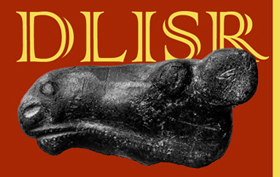Formal Scope Statement
Collection scope
The Digital Library of Indigenous Science Resources (DLISR) is created by the non-profit organization Tapestry Institute, whose mission is to understand different ways of knowing, learning about, and responding to the natural world. We carry out original research on how people learn through science, art, story, and experience -- educational ways new to Western culture but traditional to Native peoples -- and carry out additional research on how such methods of learning can be applied effectively to public education venues.
As it presently exists, DLISR is a prototype for culturally-competent cross-cultural digital library collections. It is intended for users of all cultures, but should be a particularly important resource for teachers and students in Native Studies programs and in tribal schools and colleges. It fits with DLESE’s mission of providing a digital library of earth science materials that meets the needs of a diverse community of users.
Collection policy
Resources for this collection are chosen because (1) the resource topic is in earth systems education, and (2) the author is a member of an Indigenous nation (e.g., American Indian or First Nations) whose cultural worldview influences the content or presentation style of the resource, and/or (3) the publication or other source in which the material originally appeared (or was catalogued) is run by Indigenous persons or groups. If the author is a non-Indigenous person and the original publication or source of the material is non-Indigenous, then the resource is included in the collection only after it has been reviewed for standards of cultural competence specifically related to the cultural reference (tribe, nation, or other group) that potentially qualifies the resource as belonging in an ‘Indigenous’ collection. At the present time, those standards are being established, but include review by the DLISR panel plus an elder of the relevant tribe, nation, or other group.
Collection contacts
Please direct questions about the collection to Jo Belasco, Esq., jo@tapestryinstitute.org.
Resource terms of use
Copyright for all resources, unless specifically stated otherwise, is controlled by the originating journal, tribal agency, or museum. The ‘resource terms of use information’ in the copyright field of the metadata record for each resource attempts to describe the terms of use and copyright of each resource individually.
Metadata terms of use
The metadata have a copyright of: Copyright 2000-2008. The metadata may be used as long as it is consistent with (still-developing) DLISR policy. This allows for the redistribution of metadata records. DLESE may modify, reformat and redistribute metadata to function within DLESE systems and services. Individual metadata records are available for harvest from DLESE.
Resource quality assurance
Quality of DLISR resources is assured in three areas: scientific integrity within Western scientific paradigms, scientific integrity within appropriate cultural paradigms of knowledge about the natural world, and cultural competence. In certain important cases when a resource satisfies quality assurance criteria of the two latter requirements but does not seem to meet the first, it is included in the collection with an explanatory statement appended for non-Indigenous users. A resource that satisfies the first requirement but does not meet minimum standards of cultural competence is not included in this collection, even if the resource topic is ostensibly ‘Native’ or ‘Indigenous’ scientific knowledge. At the present time, Western science standards are evaluated by a panel of scientists collaborating with Tapestry. Both cultural competence standards are evaluated by a panel of elders and Native Scientists collaborating with Tapestry. An elder of the relevant tribe, nation, or other group is included in the quality assessment review process whenever necessary.
Metadata quality assurance
In terms of metadata quality, metadata are reviewed by Tapestry. Tapestry ensures that resources meet the criteria to be part of DLISR, provides a spell check, ensures all metadata attributes are complete and applied correctly, and assigns metadata record identification numbers. The collection uses DLESE's current metadata format and provides all required metadata. The collection is directly searchable at: http://www.dlisr.org .
If library users find errors or have suggestions for improvement for the collection, such changes will be considered and changes will be made as appropriate. Please send your questions and suggestions to: jo@tapestryinstitute.org.
Persistence plan for the collection
Tapestry intends to maintain and expand the collection on its own server. Even though federal digital library funding has been drastically cut since the inception of DLISR, work has continued on it at a volunteer level. Efforts are currently underway (2008) to include more Indigenous science databases in DLISR. The viability of expanding DLISR has increased as the invention of new technology allows for the compiling of collections without the arduous task of cataloguing. Tapestry will continue to secure new partners in order to expand DLISR to include the wealth of available digitized Indigenous science resources online (within appropriate guidelines).
Return to the DLISR Collection.
DLISR is maintained by Tapestry Institute.
| Copyright 2005-2008, Tapestry Institute |
Email us - dlisr at tapestryinstitute.org |
|


